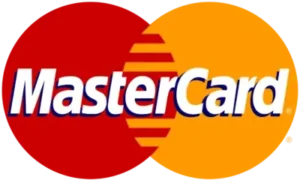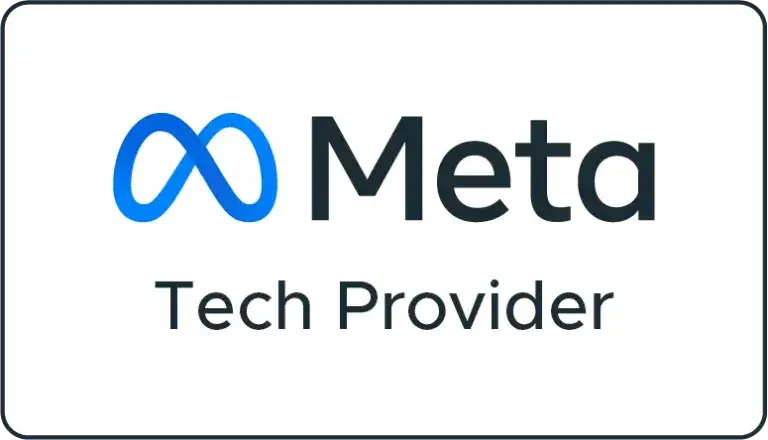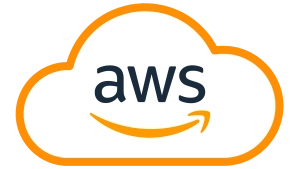Introduction to Google Ads Bidding
The modern digital landscape constrains businesses to seek new promotional tools and approaches to enhance their internet presence and attract target customers to their websites. In this regard, the efficiency of Google Ads largely depends on its fundamental element—bidding.
Several factors could make the choice of Google Ads automated vs manual bidding even more critical for your campaign because it can significantly affect its outcomes and cost-efficiency for your business. This paper will focus on the discussion of this decision.Pre-Requisites: Understanding The Basics Of Bidding In Google AdsAlthough our main focus is on Google Ads automated vs manual bidding, it is essential to understand the basics of how bidding works in Google Ads. In particular, bidding determines where your ad will be placed – its competitiveness in the marketplace and visibility level – and how many interactions with it you can count on.
Importance Of Choosing The Right Bidding Strategy
The question of whether Google Ads automated vs manual bidding stands out as especially crucial for emerging businesses without substantial experience in digital marketing. As an entrepreneur trying to start their online promotional campaign, it would be essential to understand how the difference between Google Ads automated vs manual bidding may impact your business. Therefore, this article will provide the basis for understanding these strategies’ essence and context to choose the most appropriate bidding strategy for your business objectives and the current marketing conditions.
What Is Bidding In Google Ads?
Bidding in Google Ads is the amount you’re willing to pay for users’ interactions with your advertisements—clicks for Search ads or impressions for Display ads. These bid amounts determine where and how often your ads appear and how many clicks or views they will earn. Google uses these bids to determine which ads to show for a specific search query or site placement in a real-time auction. Therefore, you must develop a bidding strategy that fits your budget and achieves your campaign goals.
Types Of Bidding Strategies
Google Ads offers several bidding strategies that are designed to accommodate different advertising goals and levels of engagement in campaign management. The two primary types of strategies are:
Automated Bidding Strategy
Automated bidding is a feature on Google Ads that eliminates the need to guess what bids to set for different ads and does it for you. It utilizes sophisticated algorithms to adjust your bids on the fly to ensure it maximizes your ROI when optimizing for your selected goals, all without demanding your constant input. This is the best strategy for an advertiser who is more concerned with time and allowing the Google algorithms to do all the input. Here are the different automated bidding strategies:
Pros of automated bidding
- Optimized Bidding: Google’s algorithms constantly process data and bid adjustments to increase the likelihood of meeting your predetermined objectives.
- Scalability: Automated strategies make it easy to scale and, in some cases, bid on multiple items simultaneously due to this high granularity.
- Data-Driven Decisions: Google uses large amounts of data in real-time to make bidding decisions thanks to automated strategies, providing a level of insight that would be impossible to achieve manually.
- Enhanced Targeting: Make sure you target only the most likely customers to increase the likelihood of reaching high-paying customers.
- Effortless Campaign Management: Automated bidding eliminates the need to manually adjust bids for each keyword or ad group, saving considerable time and effort.
Cons of automated bidding
Despite these advantages, automated bidding has several disadvantages, including less control and dependency on data, use of more extensive budget and learning.
- Less Control: Surrendering the running of your potential bidding decisions to Google’s algorithms means you don’t have much control over what you bid on what.
- Dependency on Data: The potential for ad spend is affected by the quality of the historical data.
- More Extensive Budgets: While automated systems are designed to offer the most optimal possible bidding scenarios, they can also lead to higher ad spend if your spending habit is not heavily monitored.
- Learning: Most automated bidding strategies have a learning period where your algorithm will analyze your performance to optimize.
Types Of Automated Bidding Strategies
Maximize Clicks
It is when Google algorithms optimize the bids for your ads to get more clicks within your budget. It is when Google increases your bidding for your ads to get more clicks than the initial bid.
Target Impression Share
It is when you make your ad more visible by allowing Google to adjust the bid to guarantee your ads appear on a share of page-high in the results sheet.
Target CPA
It is the strategy where Google automatically sets the bid for your ads to get conversions at the cost you want.
Enhanced Cost-Per-Click
ECPC is when Google improves manual bidding by applying an automated approach to get more conversions without paying more.
Target ROAS
It is when you have multiple conversion values for your campaign to allow all useful conversion with your objectives.
What Is Manual Bidding?
It is a method that advertisers prefer when they want a hands-on approach to the campaigning process, and they have ample time to manage bids effectively. Manual bidding in Google Ads refers to the bidding one conducts at the keyword or ad group level. The advertiser’s manual approach involves this type of bidding because it allows the marketer to use their detailed knowledge of their audience and the competitive landscape to make adjustments. In other words, the algorithm’s automated system may not immediately recognize or react to some aspects of the campaign.
Pros of manual bidding
- Precise control: One can decide the amount they want to pay for every click. This aspect is critical in a highly competitive market and hence they opt for manual bidding. It avails them the opportunity to be fully in control of their clicks, allowing them to tweak their strategy for maximum ROI.
- Customized adjustments: One can adjust their bid immediately as per the market dynamics or performance data. This level of flexibility is unattainable for automated adventures.
- Keyword specific optimization: With manual bidding, you can allocate budgets according to the performance of individual keywords, focusing on those that drive the best results.
- Cost Management: Potentially more effective in managing spending, as advertisers can set strict limits and adjust bids to stay within budget.
Cons of manual bidding
However, manual bidding has a share of its cons:
- Time-consuming: Requires a lot of time to monitor and adjustment, especially large campaigns or those without dedicated resources.
- Requires expertise: Requires a deep understanding of PPC strategies and market behavior, which one may lack when a novice.
- Slower Reaction Time: Unlike automated systems, manual adjustments might not react quickly enough to sudden market changes or opportunities.
- Lack of Automation: Manual bidding does not leverage automation technology to optimize bids automatically. Advertisers need to manually analyze data and make bidding decisions, which can be challenging and may lead to missed opportunities.
- Assumptions/conclusions: Unlike automated campaigns that rely on scientifically backed assumptions, manual bids rely on analysis which may be more conservative than effective.
When you compare Google Ads automated vs manual bidding, one of the major drawbacks of manual bidding is the slower reaction time. Manual adjustments cannot possibly react quickly enough to sudden shifts in the market or new opportunities. In addition, manual bidding is not automated – advertisers need to take particular decisions rather than relying on the system. Advertisers work with data manually and make assumptions, which makes it challenging to bid and can lead to missing good opportunities. As such, one can conclusively state that when you compare Google Ads automated vs manual bidding, the second option offers a greater level of control that cannot be conveyed otherwise in an automatic strategy, fitting marketers that prefer active engagement and have enough expertise to bid efficiently.
Google Ads Automated Vs Manual Bidding
Choosing the right bidding strategy in Google Ads is crucial to ensure the maximum effectiveness and efficiency of your advertising campaigns. In the comparison between Google Ads automated vs manual bidding, the reader gets to know the advantages and strong sides of each, allowing them to draw a decision based on their needs and campaign features. Here are the situations where you have to choose automated bidding.
Situations Where Automated Bidding Wins
Automated bidding is particularly beneficial in certain scenarios:
- Large-scale Campaigns: When managing a vast array of keywords and ad groups, automated bidding can adjust bids in real-time across the campaign, optimizing for the best possible outcomes based on complex data patterns that are difficult to analyze manually.
- Limited Time Resources: For businesses without the manpower to constantly monitor and adjust bids, automated bidding offers a practical solution that saves time and effort while still aiming for optimal performance.
- Highly Variable Markets: In environments where consumer behavior and competitive activities change rapidly, the reactive nature of automated algorithms can keep pace with the market, adjusting bids to capitalize on emerging trends.
Situations Where Manual Bidding Is Preferable
Conversely, manual bidding may be more appropriate in the following circumstances:
- Tightly Controlled Budgets: For smaller businesses or those with strict advertising budgets, manual bidding allows for precise control over spending, ensuring that costs do not spiral unexpectedly.
- Niche Markets: In specialized markets where the advertiser possesses deep insight into the audience’s behaviors and preferences, manual bidding can leverage this specialized knowledge to tailor bids that automated systems might not adequately capture.
- Campaigns Requiring Fine-Tuned Control: When specific campaign objectives require nuanced adjustments that automated systems are not programmed to manage, manual bidding provides the flexibility needed to implement highly targeted strategies.
Balancing The Pros And Cons
When comparing Google Ads automated vs manual bidding, it’s important to balance the pros and cons of each approach:
- Efficiency vs. Control: While automated bidding offers efficiency and simplifies campaign management, manual bidding provides unparalleled control over each aspect of your bidding strategy.
- Scalability vs. Precision: Automated bidding scales effectively with your advertising needs, handling vast amounts of data and adjustments seamlessly. Manual bidding, however, allows for precise, knowledgeable adjustments that can be crucial for specific campaign goals.
- Data Dependency: Automated bidding relies heavily on historical data and machine learning, which can be a double-edged sword. Inadequate data can lead to suboptimal bidding decisions. In contrast, manual bidding relies more on human insight, which can be both an advantage and a limitation depending on the expertise of the manager.
Understanding these differences and evaluating your specific needs and resources will guide you in choosing the right bidding strategy that not only fits your budget but also aligns with your overall marketing objectives.
How to Choose the Right Bidding Strategy for Your Business
Assessing Your Campaign Goals
First and foremost, you must identify the nature of your business objectives among various Google Ads campaigns. Whether you want to increase brand visibility, traffic, leads, or direct sales, the approach to bidding would differ.
- For Maximizing Conversions: If the scope of your business aim is to allow for as many conversions as possible, automated bidding may be the optimal way to go. This is because it helps to target complex algorithms that identify the best-fitting traffic most likely to convert.
- For Tight Budget Control: If you have to be extra cautious about the budget and prevent overspending, manual mode enables you to set a maximum bid amount and adjust it according to the specific ad’s performance and cost-efficiency factors.
Understanding Your Budget and Resources
The budget you can allocate to the Google Ads campaign is a decisive factor along with your available resources.
- Limited Budget: Having a strict cap on how much money you can afford or invest, manual mode can assist you in making sure that you’re not overspending, and every dollar invested into the campaign is utilized effectively.
- Limited Human Resources: In case you are short on available employees to constantly check and tweak ads in regards to their traction and workability, automated mode can handle most of this aspect and reduce team workload.
Experience Level with Google Ads
How well you know the platform and have previously worked with this type of service is another aspect that should determine the partially optimal bidding model.
- Less Experienced Users – Aspects for those who are relatively new to Google Ads or those who have limited time to explore bid management, automated bidding offers an enabling framework where a big portion of the decision-making process is handled on their behalf.
Making The Choice: Manual Or Automated Bidding?
These are some of the major areas to consider when deciding the best approach between the two for your Google Ads campaigns. Essentially, this depends on the campaign goals, work plan, and another related budget, resources, and the need for control.
The Best Scenarios For Automated AdWords Bidding
Automated bidding works best in the following scenarios;
- Maximizing Conversions – When one intends to gather as many conversions as possible, Smart Bidding utilises historical data and bidding thus guarantees the best performance.
- Large-Scale Campaigns – Involved campaigns with numerous keywords and ads can use automated bidding to adequately manage the bid.
- Time Constraints – For those who could focus on other areas of the advertising campaign and have limited time to manage the bid, automated bidding offers continuous optimization of bids to ensure that the results are achieved.
The Best Scenarios For Manual Google AdWords Bidding
Manual bidding works best in the following scenarios;
- Specific Budget Allocation – Those with limited budget and intend to allocate the same to only top auctions.
- Precise Bid Control – When one needs to have specific control over one’s bid, manual bidding offers broad control of auctions, which is not subdivided.
- Constant Monitoring – All who desire to monitor and make bids modification real-time should use manual bidding.
Combining Manual And Automated Bidding
You may find that a strategy combining manual and automated bidding is sometimes the best choice. You can create a hybrid version of these strategies by ensuring that critical elements of your bids have maximum operator oversight and using automation to make the rest of your bidding more efficient. Sometimes, what we do is we manually bid for high-value keywords or ad groups while using automation for overall campaign optimization.
Tips for Implementing the Chosen Bidding Strategy
After you’ve picked your bidding strategy, make sure you take the following best practices into account once you start utilizing your chosen strategy:
Best Practices : Google Ads Automated and Manual Bidding
- Set Clear Goals while planning your strategy: Define clear, measurable objectives for what you want your automated bidding strategy to achieve.
- Monitor Performance Regularly: Even with automation, monitoring campaign performance is crucial to ensure the algorithms are performing as expected.
- Adjust the settings Based on Insights: Use insights from ongoing campaigns to refine your bidding strategy and parameters over time.
- Stay Informed About Market Changes: Keep up-to-date with market trends that could influence your bid amounts and campaign performance.
- Be Reactive: Quickly respond to campaign data and adjust bids to optimize for the best possible results.
- Use Granular Targeting: Take advantage of the control manual bidding offers by using granular targeting to refine where and how your ads are shown.
Conclusion
Choosing between Google Ads automated bidding vs manual bidding involves a balance of strategic consideration and practical realities. By carefully assessing your goals, resources, and expertise, you can select a bidding strategy that meets your current needs and positions your campaigns for future success. Remember, whether you choose automated or manual bidding, the goal is to maximize the return on your investment while achieving your business objectives.
FAQ:
1. Francis Tries To Explain To His Boss The Benefits Of Using Automated Bidding. Match These Aspects Of Automated Bidding With The Benefits They Serve.
Here are the Correct matches of automated bidding’s aspects with benefits, Francis should explain to his boss:
Depth of signals used and cross analysis – Integrates a large variety of signals and considers new ones to evaluate user intent
Time saved – Tailors bids to each user’s unique context, using relevant signals present at auction time
Auction-time bidding – Algorithmically helps set the appropriate bid for each and every auction
Machine learning – Alleviates the strain on marketing resources by automating more manual tasks
Source: School4SEO













